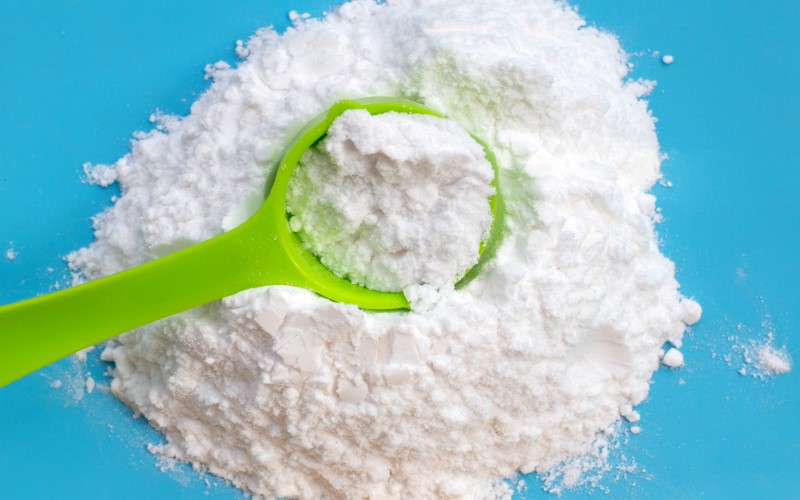Unveiling the Safety of Silicon Dioxide in Your Food Choices
Mar 13, 2024 By Madison Evans
Step into the realm of food additives, where Silicon Dioxide holds sway. It's ubiquitous yet enigmatic in everything from powdered spices to grated cheese. But what about its safety? Does Silicon Dioxide lurk with hidden risks in our favorite snacks?
Join us on an enlightening journey as we unravel the mysteries surrounding Silicon Dioxide as a food additive. Together, we'll delve into its potential impact on health, exploring its benefits and concerns. By understanding Silicon Dioxide's role in our food, we'll empower ourselves to make informed choices and navigate the culinary landscape with confidence.
What is Silicon Dioxide?
Before delving into safety considerations, it's essential to understand Silicon Dioxide's fundamental nature. As a naturally occurring compound abundant in the Earth's crust, it transcends its geological origins to become a vital component in the food industry.
Silicon Dioxide is a ubiquitous anti-caking agent in its food-grade form, crucial for preventing undesirable clumping in a myriad of powdered or granulated products. This multifaceted role underscores its significance in maintaining product quality and consistency, highlighting its indispensability in various food processing applications.
The Role of Silicon Dioxide in Food
Silicon Dioxide plays a multifaceted role in the realm of food, offering several crucial functions that contribute to product quality and consumer satisfaction:
Anti-Caking Agent:
One of the primary roles of Silicon Dioxide in food is its function as an anti-caking agent. Silicon Dioxide prevents clumping by absorbing excess moisture and maintaining particle separation in powdered or granulated products such as spices, salt, and powdered sugar. This ensures the product remains free-flowing and easy to use, enhancing convenience and overall consumer experience.
Texture Modifier:
Silicon Dioxide also contributes to the desired texture of certain food products. In items like instant soups, sauces, and seasoning blends, it helps to create a smooth and uniform consistency, improving mouthfeel and enhancing sensory appeal.
Moisture Absorption:
Another vital role of Silicon Dioxide is its ability to absorb moisture. Silicon dioxide effectively manages moisture levels, prolonging the shelf life of diverse food items. This mitigates the likelihood of spoilage and ensures sustained freshness throughout storage.

Stabilizer:
Silicon Dioxide acts as a stabilizer in some food formulations, helping to maintain the structural integrity of emulsions and suspensions. This can be particularly important in products like salad dressings, sauces, and dairy-based beverages, where stability is essential for quality and visual appeal.
Carrier for Flavors and Colors:
Silicon Dioxide also carries flavors, colors, and other additives in specific food applications. By evenly dispersing these ingredients throughout the product matrix, Silicon Dioxide ensures consistent flavor delivery and visual appearance, enhancing overall product quality and consumer acceptance.
The Safety Spectrum
Now, the big question: Is Silicon Dioxide safe for consumption? Let's break down the safety spectrum into various aspects to get a clearer picture.
Regulatory Approval:
When used as a meals additive, Silicon Dioxide undergoes strict regulatory scrutiny. The U.S. Food and Drug Administration (FDA) and the European Food Safety Authority (EFSA) have evaluated and accredited its utilization inside distinct limits. This regulatory approval shows that silicon dioxide is deemed secure for intake while used by set up guidelines.

Potential Health Benefits:
Beyond its role as an anti-caking agent, Silicon Dioxide exhibits some potential health benefits. It is a trace element essential for human health, bone formation, and overall connective tissue health. However, it's crucial to note that these benefits are associated with the natural form of Silicon Dioxide found in food rather than the purified form used as a food additive.
Avoiding Overconsumption:
While Silicon Dioxide is generally recognized as safe, moderation is key. Excessive intake of any substance, even those deemed safe, can lead to unintended consequences. A balanced and varied diet is essential for overall well-being, and relying on processed foods with high Silicon Dioxide content may not align with this principle.
Potential Concerns
While Silicon Dioxide is generally recognized as safe for consumption, some potential concerns warrant consideration:
Respiratory Exposure:
In industrial settings where silicon dioxide is handled in powder form, there may be a risk of respiratory exposure to fine particles. Prolonged inhalation of airborne Silicon Dioxide dust can irritate the respiratory tract and potentially lead to respiratory issues such as silicosis.
However, the levels of Silicon Dioxide used in food are typically much lower than those encountered in industrial settings, minimizing the risk of respiratory exposure for consumers.
Silica Gel Packets:
Although not directly related to Silicon Dioxide in food, silica gel packets containing a form of Silicon Dioxide are often found in food packaging to absorb moisture and maintain product freshness. While the contents of these packets are generally considered non-toxic, there is a risk of accidental ingestion, particularly by children or pets. Therefore, storing food and packaging materials containing silica gel packets out of reach is essential to prevent ingestion.
Potential Environmental Impact:
The production and disposal of Silicon Dioxide used in food processing may have environmental implications. Silicon Dioxide itself is naturally occurring and non-toxic. However, the processes involved in its extraction, purification, and disposal of byproducts may contribute to environmental degradation if not managed responsibly.
As such, food manufacturers need to prioritize sustainable sourcing and production practices to minimize the environmental footprint of Silicon Dioxide and other food additives.
Conclusion:
In summary, silicon dioxide is a versatile food additive that enhances product quality and consumer satisfaction by preventing clumping, improving texture, and extending shelf life. Regulatory bodies endorse its safety within specified limits, recognizing potential health benefits as a trace element. However, moderation is vital to avoiding overconsumption, particularly in processed foods.
While respiratory exposure and accidental ingestion concerns exist, responsible handling mitigates risks. Understanding Silicon Dioxide's role empowers informed dietary choices, prioritizing whole foods and mindful consumption. Navigating the culinary realm confidently allows us to reap its benefits while minimizing potential drawbacks.







